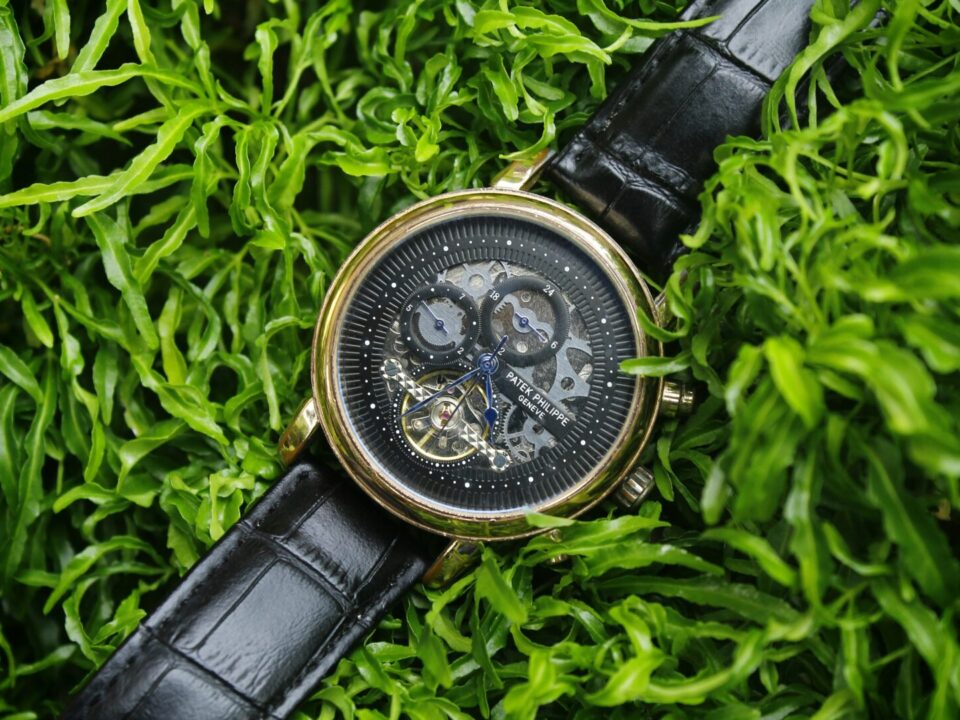The artist known as Erté (pronounced “Air-Tay”) was born in 1892 in St. Petersburg, Russia, to Russia’s elite and given the name of Romain Petrovich de Tirtoff. Ironically, that was the same year The Nutcracker ballet premiered in St. Petersburg. His self-invented name, the phonetic combination of his initials R and T, would become synonymous with class and sophistication over his incredible lifetime.
A Prodigy at Age Five
Like many young boys, the artist worshipped his mother; however, unlike most sons, he was a designer at heart. At the tender age of five, he drew a ball gown for her that was made by a seamstress, amazed at his skill. Born into a family with five generations of naval officers and a father who held the title of fleet admiral, he defied expectations by following his dream of being an artist.
Paris at Nineteen
Like many young artists, he left home and moved, alone and without funding, to Paris to establish himself, only to be disappointed and rejected after only one month as a draftsman “with no talent,” according to his boss. Ever confident and resilient, he sent his drawings to Paul Poiret, the top fashion designer of the day, who offered him a job. This was the beginning of an outstanding career across a multitude of artistic genres, which spanned his lifetime until his death at age ninety-seven.
Theatrical Costumes
Erté had a special skill for creating flamboyant and sensuous costumes for theatrical productions in New York and the Folies-Bergère in Paris. His work included set design, luxurious dresses, feather boas and other accessories for opera and ballet productions. In addition, he worked in Hollywood for Louis B. Mayer designing sets and costumes for movies such as Ben Hur.
Harper’s Bazaar
Erté’s star rose to fame with his association with Harper’s Bazaar magazine, which lasted for twenty-two years. He grew in prominence to become its art director, and is seen by many as changing the trajectory of fashion illustration. His outstanding works of graphic art resounded with audiences around the world. William Randolph Hearst, the owner of Harper’s Bazaar magazine, offered Erté an exclusive contract for his pen and ink illustrations and he went on to create over two hundred and forty covers. He also utilized another painting medium called gouache, which is similar to watercolor, only opaque.
The “Father of Art Deco”
Erté developed a signature style early in his career that became known as art deco. According to Architectural Digest, art deco is “characterized by rich colors, bold geometry, and decadent detail work.” Mirrors, sunbursts and symmetrical designs in exuberant shapes are the epitome of art deco design.
Alphabet Series
Erté’s famous “Alphabet Series” from the 1980’s featured lithographs of nude women posed as letters of the alphabet. For example, the letter B shows a woman holding onto a snake, D has a woman holding up a crescent moon, and the L has a woman with a tiger on a leash lying at her feet. These are still incredibly popular today and are an important part of Erté’s legacy. In addition to the alphabet series, the “Numbers Suite” features complementary designs of nudes in numerical shapes. Another famous series is called the “Sunlight / Moonlight Suite.”
What’s in a Name?
Erté’s serigraph works boast names that resonate through the years, including “Phoenix Reborn,” “Phoenix Triumphant,” “Fireflies,” “Swept Away,” “Eyes of Love,” and “Rigoletto.” His gorgeous bronze figures are similarly named, such as “Masquerade,” “Bacchante,” “Mermaid,” “Radiance,” and “Flames of Love.”
Bronzeworks
Beginning in 1980, Erte began sculpting bronze sculptures based on his costume designs. This enabled him to translate his designs into three dimensional works, which are highly collectible in both Europe and the United States.
His Autobiography: Things I Remember
As Erté has famously said, “I start a picture and I finish it. I don’t think about art while I work. I try to think about life.” His autobiography, Things I Remember, was published in 1975 when he was eighty-three years old. It was followed in 1989 by an update, My Life / My Art. Numerous books for collectors and art enthusiasts include Erté at Ninety: The Complete Graphics, Erté at Ninety-Five: The Complete New Graphics, Designs by Erté: Fashion Drawings and Designs From Harper’s Bazaar, and Erté: Art Deco Master of Graphic Art & Illustration.
Jewelry Designing
One of the most intriguing books, “Erté: Art to Wear: The Complete Jewelry,” documents his career as a jewelry designer that began at age eighty-six. He insisted on the exact stones envisioned for each piece, which he called “Art to wear.” Erté’s jewelry featured only the best Thailand rubies, Japanese coral, and Brazilian emeralds and blue topaz. He created 328 limited edition designs, inspired by his favorite theme, the nautical world. Other inspirations were peacocks and Egyptian culture. Each of his jewelry collections is uniquely named, such as “Fantasy,” “Tempest,” “The Nile,” and “La Mer.”
Permanent Collections
Several of Erté’s artworks are included in the permanent collections of such prestigious institutions as the Museum of Modern Art, the Smithsonian Institution, New York’s Metropolitan Museum of Art, and the Victoria and Albert Museum in London. In 1967, an exhibition of nearly two hundred of his works was purchased in its entirety by the Metropolitan Museum of Art.
Still Relevant
As recently recounted in Vogue, Stella McCartney was on a plane at age twelve with her mother when she met Erté, sitting in the next row. As a budding designer, she spent the whole flight talking to him and ended up with an internship when she got older. She was highly influenced by his collection of more than one hundred and thirty fabric designs that he created in the late 1920’s. Subsequently, her latest designs feature some of Erté’s design motifs.
An Icon of Many Talents
Over his incredible career, Erté excelled in numerous fields, including fashion and costume design, lithographs and serigraphs, bronze sculpture, and jewelry design. Throughout his life he never lost love for open spaces and often visited Mallorca, Monte Carlo and Barbados. The French government awarded him the title Officer of the Arts and Letters in 1976, and in 1982 he was given the Medaille de Vermeil de la Ville de Paris. He is truly an icon, not only in the Art Deco movement, but the overall art world. As testament to his dramatic success, his works are highly sought after by collectors worldwide.





